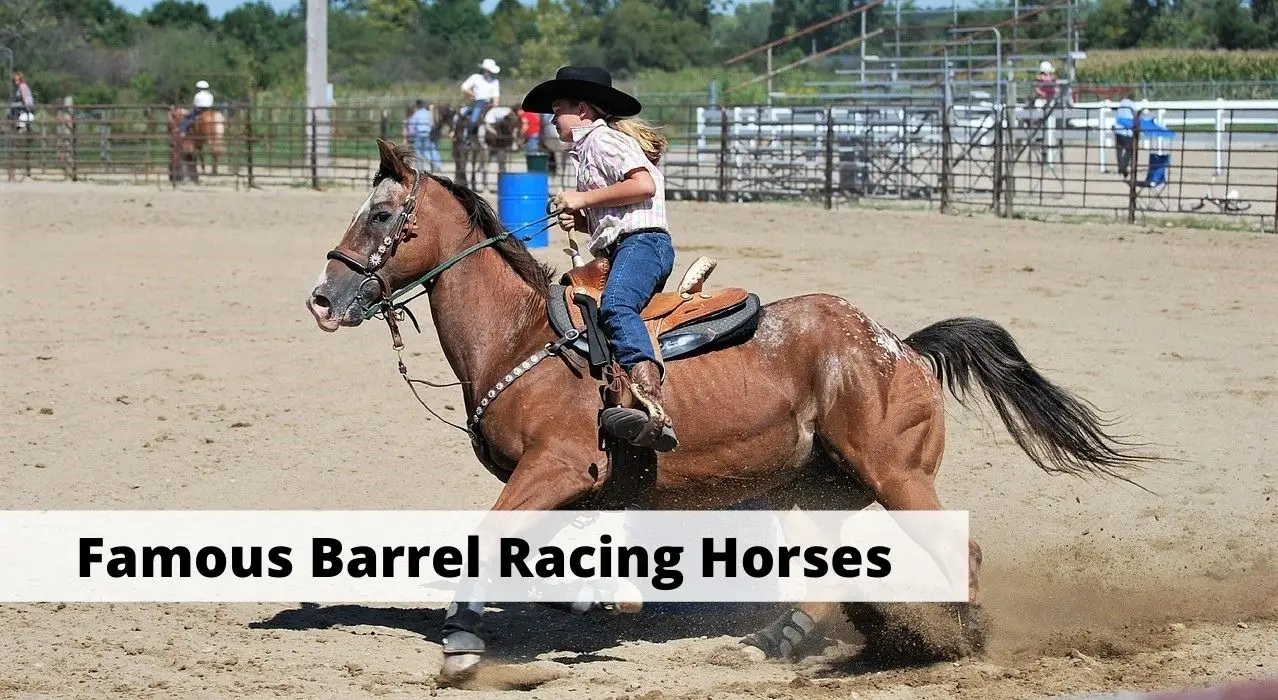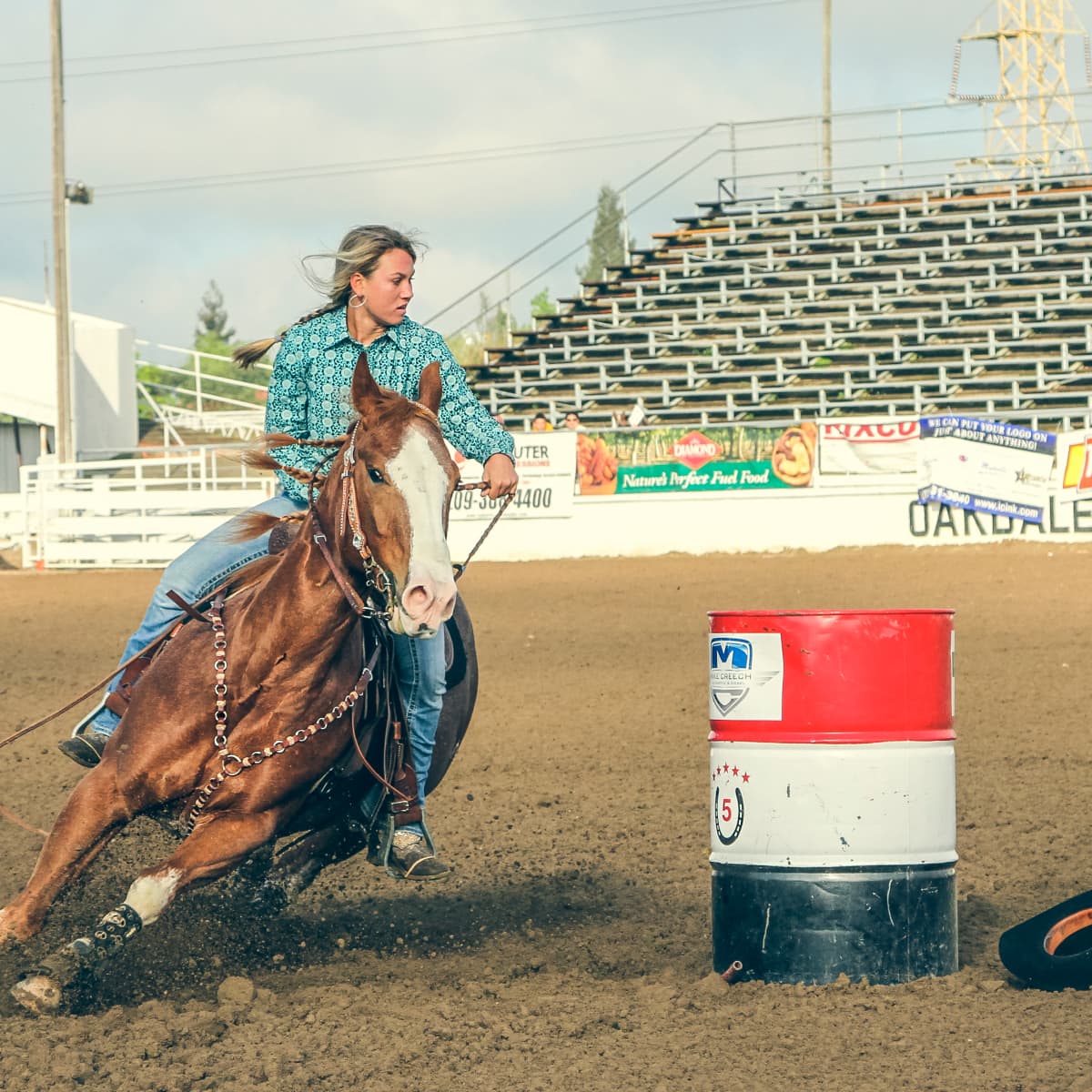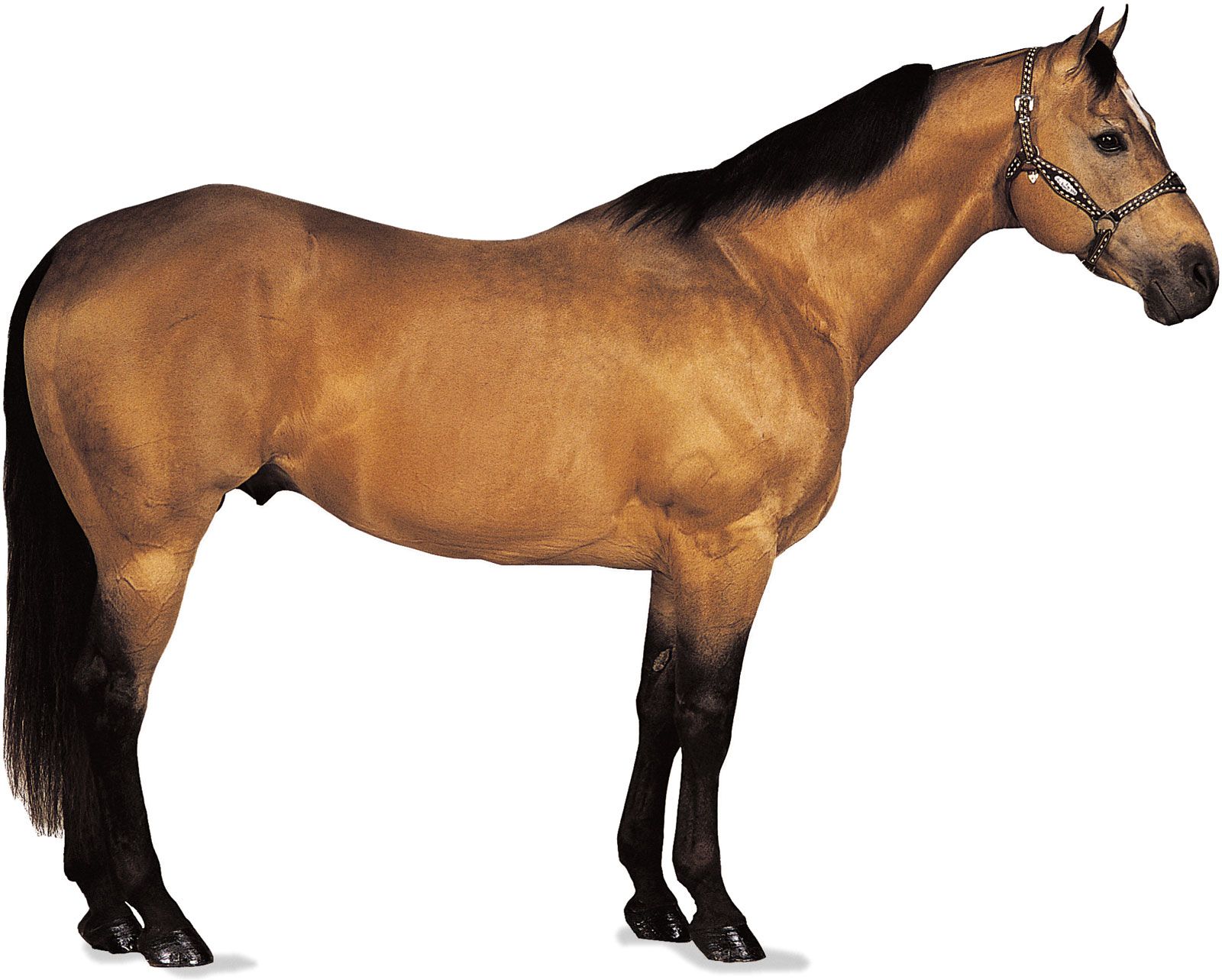Barrel racing is a high-speed, adrenaline-pumping equestrian event that demands the utmost athleticism and precision from both horse and rider. The success in this sport hinges on the perfect synergy between the two, where split-second decisions can make the difference between victory and second place. Selecting the best horse breeds for barrel racing is therefore a critical decision for any aspiring competitor. This post explores the top contenders in the realm of barrel racing horse breeds, their unique attributes, and what makes them stand out in this thrilling sport.
Exploring the Elite Traits of Barrel Racing Horses

In the competitive world of barrel racing, horses that exhibit a particular set of skills rise above the rest. It’s not enough for these equine competitors to be fleet-footed; they must also possess the agility to weave through the course with finesse. The sport’s inherent challenge is to blend speed with the ability to tackle a complex pattern around barrels with precision.
Key Traits of Top-Performing Barrel Racers
The standout qualities of barrel racing horses include a combination of physical strength and mental acuity. These traits enable the horses to excel in the demanding environment of the barrel racing arena.
- Instantaneous Acceleration: The ability to spring into action from a standstill is crucial for gaining an early advantage and swiftly covering ground between barrels.
- Fluid Movements: The dexterity to navigate the course with smooth actions is vital to maintaining speed and preventing any deceleration during turns.
- Lasting Endurance: Horses must have the endurance to maintain their quick pace from start to finish without faltering in energy or speed.
- Durable Build: A well-conditioned body is necessary to withstand the sport’s intense physical demands and to support the horse’s health and longevity.
- Attentive Disposition: Horses must be keen and sensitive to their rider’s signals, ensuring immediate and precise responses during the race.
Strategic Training for Optimal Performance
Each barrel racing horse requires a training program that’s customized to its individual strengths and areas for improvement. Training strategies may include exercises to enhance joint flexibility, drills to improve the horse’s burst speed, and techniques to refine the horse’s responsiveness to the rider’s cues.
Evaluating a Horse’s Barrel Racing Potential
When assessing a horse for its suitability in barrel racing, trainers examine the horse’s physical structure, demeanor, and skill level. The aim is to determine the horse’s innate capabilities and the likelihood that it can be trained to embody the elite attributes necessary for success in barrel racing competitions.
Ultimately, the path to excellence in barrel racing is forged by cultivating a balance of speed, agility, and a profound partnership with the rider. By focusing on these aspects, trainers and riders can enhance their horse’s performance, setting the stage for captivating races and successful outcomes.
Essential Considerations in Barrel Racing Equine Selection

When preparing for the challenge of barrel racing, choosing a suitable horse breed is a fundamental step for competitors. Those involved in this sport look for horses that naturally demonstrate speed, coordination, and the ability to maneuver the course with ease. This discourse examines the inherent qualities of leading barrel racing horse breeds and their contributions to the sport’s competitive nature.
The Prevalence of Quarter Horse Barrel Racing
Renowned for their presence in rodeo sports, American Quarter Horses often top the list for barrel racing candidates. Their prevalence in the sport is attributed to their natural aptitude for short-distance sprints, making them ideal for the rapid and powerful movements required. This breed’s calm demeanor also plays a vital role in their ability to perform under the intense atmosphere of competition.
The Arabian Horse: Synonymous with Endurance and Nimbleness
Arabian horses, while not as quick off the mark as Quarter Horses, are valued for their extraordinary stamina and nimbleness. This breed’s ability to maintain a consistent pace and perform agile maneuvers is advantageous during the twists and turns of a barrel racing course.
The Thoroughbred’s Contribution to the Sport
Thoroughbreds, with their racetrack heritage, bring high-velocity performance to the barrel racing arena. With proper training and guidance, their natural competitive zeal can translate into a formidable presence on the barrel racing circuit. Their larger size requires a tailored training approach to fully harness their abilities within the confines of barrel racing.
Paint Horses: Aesthetic and Agile Competitors
Known for their striking appearance and muscular build, Paint Horses also offer agility and strength in barrel racing. Benefiting from their Quarter Horse ancestry, they exhibit similar advantageous traits, and their tractable intelligence aids in their training process.
The Multifaceted Appaloosa
Appaloosas are not only visually appealing but also skilled in the competitive sphere of barrel racing. Their versatility and athletic prowess, coupled with resilience, make them a capable breed for the sport’s challenges.
Discovering Diverse Contenders in Barrel Racing
- Crossbreeds: The combination of Quarter Horse and Thoroughbred genes can yield horses that excel in both agility and speed, presenting themselves as outstanding participants in the sport.
- Ponies and Other Stock Breeds: These smaller horses, sometimes underestimated, can offer agility and quickness, making them suitable for young riders or those preferring a smaller horse.
While breed is an important factor in barrel racing equine selection, the individual horse’s conformation, personality, and instincts are equally influential. Consistent training and a synergistic relationship with the rider are indispensable elements that can elevate any breed to become a champion in barrel racing.
Refining the Approach to Barrel Racing Equine Selection

To achieve peak performance in barrel racing, meticulous attention is given to each horse’s physical and psychological characteristics. This selection process transcends the traditional focus on breed, instead spotlighting the individual horse’s potential to meet the sport’s exacting standards. By closely examining and fostering these attributes, competitors aim to prepare their horses for the rigors of barrel racing competition.
Detailed Physical Assessment for Barrel Racing
An ideal barrel racing prospect captivates with its robustness and agility. Beyond breed, the horse’s physical structure is a key indicator of potential success in the sport. Critical physical aspects include:
- Harmonious Proportions: A balanced physique contributes to both agility and strength during competition.
- Superior Hoof Integrity: Durable and well-formed hooves are essential for withstanding the demands of the barrel pattern.
- Potent Hindquarters: A strong posterior is vital for power generation during quick starts and tight turns.
Visible musculature, skeletal integrity, joint health, and proper body alignment are all scrutinized to gauge a horse’s suitability for barrel racing.
Mental Attributes of Potential Barrel Racers
A deep dive into the mental makeup of barrel racing candidates uncovers several key characteristics. These equine athletes often possess:
- Quick Adaptability: The capacity to cope with the diverse pressures encountered in competitive arenas.
- Unwavering Focus: The ability to maintain concentration amidst various distractions.
- Innate Drive: A natural willingness to perform at their best at all times.
While a horse’s physical prowess is foundational, its mental sharpness often separates the good from the exceptional. Mental resilience, the capacity to cope with stress, and the ability to connect with the rider are all critical to a horse’s competitive edge.
Assessing Dynamic Qualities for Competitive Edge
A dynamic assessment of a horse’s movement and responsiveness is also a pivotal element of barrel racing equine selection. Key dynamic qualities include:
- Quick Reflexes: Prompt reactions are essential for navigating tight turns with precision.
- Natural Coordination and Rhythm: Efficient limb movement and inherent cadence are advantageous.
- Fluidity in Speed Transitions: The ability to smoothly change speeds is crucial for maneuvering through the course effectively.
While targeted training can enhance these dynamic traits, horses with a natural predisposition to such abilities may have an initial edge.
Extensive Evaluation for Optimal Barrel Racing Candidates
An exhaustive evaluation encompasses more than the observable characteristics, including thorough health examinations and performance assessments. Essential considerations in this expansive evaluation include:
- Health History: A comprehensive health record and freedom from recurring ailments ensure a horse’s sustainable participation in the sport.
- Performance Metrics: Analyzing previous performances can shed light on a horse’s strengths and highlight areas for growth.
- Behavioral Patterns: Observing a horse’s conduct in a variety of scenarios can forecast its ability to handle the high-stakes environment of barrel racing.
The art and science of barrel racing equine selection fuse empirical analysis with an innate perception of a horse’s natural abilities. Candidates are evaluated in a holistic manner, ensuring they embody the necessary combination of physical, mental, and dynamic qualities to excel in the competitive sphere of barrel racing.
Advancing Competence in Training Barrel Racing Horses

Developing a competitive barrel racing horse is an endeavor that integrates a thorough and adaptive training regimen. Trainers concentrate on leveraging each horse’s innate abilities while systematically improving their weaker areas, fostering the horse’s comprehensive potential. The evolution of a barrel racing horse into an adept competitor involves a progressive and nuanced approach that nurtures both their physical prowess and mental tenacity for the sport’s intensity.
Essential Early Training for Aspiring Barrel Racers
Foundational training for nascent barrel racing horses is integral to their future proficiency. The rudimentary phase includes:
- Initial Groundwork: Laying down the basic behaviors and obedience to commands.
- Physical Conditioning: Cultivating the necessary stamina and strength for competitive racing.
- Pattern Introduction: Methodically acquainting the horse with the barrel pattern to build confidence.
These initial stages are indispensable in establishing a strong base for intricate skills development.
Enhancing Barrel Racing Proficiencies
As horses mature, the focus of training pivots to fine-tuning the distinct skills integral to barrel racing. This phase encompasses:
- Incremental Speed Training: Carefully increasing the horse’s speed while emphasizing control and posture.
- Footwork and Agility: Implementing exercises geared towards enhancing nimbleness and swift changes in direction.
- Consistent Cue Responses: Reinforcing the horse’s reliable reaction to rider guidance for precise course navigation.
These specialized exercises are pivotal in refining the horse’s capabilities for the rigors of competition.
Strengthening a Horse’s Psychological Resilience
Alongside physical aptitude, mental strength plays a critical role in training a barrel racing horse. Focus areas for trainers include:
- Attention Enhancement: Training horses to remain focused in the dynamic environment of an arena.
- Composure under Pressure: Equipping horses to stay calm and responsive during high-stress moments.
- Adaptive Thinking: Fostering a horse’s ability to handle unforeseen situations during competition.
These psychological training components are vital for a horse’s composure and mental acuity in crucial moments.
Perfecting Advanced Racing Techniques
As horses reach higher levels of skill, they are introduced to advanced tactics to sharpen their racing proficiency. This stage includes:
- Turn Optimization: Enhancing the horse’s turns around barrels for maximum efficiency.
- Intuitive Speed Adjustment: Training the horse to modulate its speed seamlessly along the course.
- Fluid Speed Transitions: Improving the horse’s capacity for smooth acceleration and deceleration to conserve momentum.
These advanced strategies are key to achieving the precision and timing that distinguish champions.
Personalized Training Strategies
Recognizing the individuality of each horse, trainers adapt their techniques to match the horse’s unique temperament and capabilities. This may involve:
- Training Intensity Modulation: Adjusting the difficulty of training exercises to align with the horse’s condition and disposition.
- Positive Behavioral Motivation: Employing reinforcement strategies to promote desirable behaviors.
- Engaging Training Activities: Keeping horses mentally stimulated and eager through interactive exercises.
Personalized training ensures that each horse’s learning trajectory is optimized, sustaining their passion for barrel racing.
Continual Training Evaluation and Adjustments
Enduring assessment and refinement of training programs are imperative for the progression of barrel racing horses. Key practices include:
- Performance Reviews: Routine evaluations of the horse’s development to pinpoint necessary enhancements.
- Health Surveillance: Vigilant monitoring of the horse’s physical well-being to prevent injuries and maintain optimal condition.
- Competitive Feedback Integration: Utilizing insights from racing events to evolve training methods for better results.
Ongoing adaptation of training strategies is essential for maintaining a barrel racing horse’s competitive edge.
The artistry of training barrel racing horses lies in a balanced approach that marries patience, expertise, and a nuanced understanding of horse behavior. Through a focused and flexible training plan, horses with suitable characteristics can be groomed into champions, ready to face the exhilarating demands of barrel racing with agility and strength.
If you’re an equestrian enthusiast or a rodeo fan, you might be curious about the various breeds of horses suited for different western sports. For barrel racing, certain breeds stand out for their agility and speed. To explore this further, dive into our article on what breed of horse is best for barrel racing. And if you’re interested in learning about other rodeo events or equestrian disciplines, check out our insights on the best breed of horse for roping, discover what type of horse most cowboys ride, and find out which breeds of horses are used for equestrian sports. Each article is packed with information to help you understand the strengths and specialties of different horse breeds in various competitive arenas.
Conclusion

While the Quarter Horse may be the reigning champion of barrel racing horse breeds, there are many contenders that possess the speed, agility, and mental fortitude required for this demanding sport. The best horse breeds for barrel racing are those that combine these attributes with a rider who can harness their potential. Through careful barrel racing equine selection and dedicated training, a horse of any of these top breeds can become a star in the barrel racing arena.



